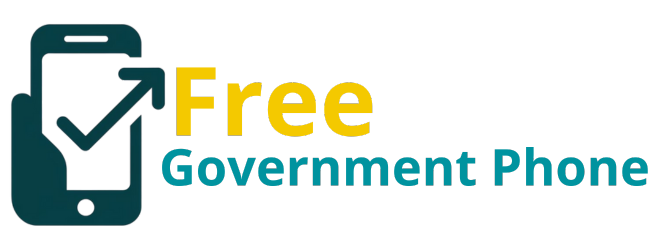California offers several phone-related benefits aimed at making communication affordable for low-income residents. These programs provide discounts on phone services, free devices, and subsidies for eligible households, ensuring that cost isn’t a barrier to staying connected.
With benefits like the California LifeLine and Affordable Connectivity Program, qualifying individuals and families can access vital communication tools for work, health, and education.
Key Takeaway
- California LifeLine provides up to $19/month off phone services for low-income residents.
- The Affordable Connectivity Program (ACP) offers free or discounted devices and internet access.
- Employers must reimburse workers for phone costs incurred during work-related tasks under California Labor Code Section 2802.
California LifeLine Program
Overview of California LifeLine
California’s LifeLine Program is a lifeline for low-income residents, offering essential discounts on phone services to ensure that everyone has access to communication. With discounts of up to $19 per month, the LifeLine Program helps reduce the monthly cost of home or mobile phone services.
The discount applies to one phone service per household, whether it’s a home phone or a cell phone. The program’s main goal is to make communication affordable for those in need, from job seekers and students to families managing on a limited budget.
The program isn’t just about cost savings; it also exempts eligible individuals from certain taxes and surcharges, which can make a significant difference for those struggling to make ends meet. [1]
Eligibility for California LifeLine
Eligibility for the California LifeLine Program depends on income level or participation in qualifying government assistance programs. To qualify, a household must either meet specific income criteria or participate in programs like Medicaid, CalFresh (SNAP), Supplemental Security Income (SSI), or Federal Public Housing Assistance.
Proof of eligibility is required, and the documentation needed will vary depending on the applicant’s situation. For example, if a household is relying on public assistance programs, a government-issued verification letter will be necessary. If the qualification is based on income, recent pay stubs or tax returns will be required.
How to Apply for LifeLine Benefits
The application process for California LifeLine benefits is relatively simple. Applicants must submit their application through the National Verifier, an online system that verifies eligibility. Once eligibility is confirmed, applicants can choose a provider that participates in the program. Providers such as TruConnect, SafeLink, and Assurance Wireless are some of the more widely available options.
The application process also requires submitting documentation to confirm eligibility, such as income statements or proof of participation in a public assistance program. Once approved, the discount will be applied to the selected phone service. [2]
LifeLine Program Limitations
While the LifeLine Program offers valuable discounts, there are some limitations to keep in mind. The primary limitation is that only one discounted phone service is allowed per household, either for a home phone or a cell phone. This ensures that the benefits are spread across as many households as possible.
In addition, the program does not cover some additional service charges, such as certain taxes and surcharges, which will still be the responsibility of the participant. Finally, eligibility must be renewed annually. If you don’t reapply or fail to meet the criteria, you may lose your benefits.
Affordable Connectivity Program (ACP)

What is ACP?
The Affordable Connectivity Program (ACP) is an extension of the LifeLine Program, providing additional support to low-income households by offering free or discounted phones, tablets, and internet access. This program was introduced to further bridge the digital divide, especially in light of the increasing reliance on online communication for work, education, and healthcare.
The ACP is directly linked to the LifeLine Program, and many of the same providers who offer LifeLine discounts also provide ACP benefits. These programs aim to ensure that low-income households can stay connected in the digital age, helping to promote educational opportunities, access to jobs, and the ability to stay informed about critical matters.
Eligibility for ACP in California
Eligibility for the ACP program mirrors that of the LifeLine Program, with income-based requirements or participation in qualifying government assistance programs. Low-income families, seniors, and individuals receiving government benefits can apply. Participants in programs such as Medicaid, SNAP, SSI, or certain tribal programs will be automatically eligible.
Providers offering ACP benefits include the same major players found in the LifeLine program, such as TruConnect, Assurance Wireless, and SafeLink Wireless. They provide free or discounted tablets and phones with data plans to ensure that eligible individuals have access to essential communication tools.
Employer Reimbursement for Work-Related Phone Use
California Law on Employer Reimbursement (Labor Code Section 2802)
California law requires employers to reimburse employees for phone usage when their personal phone is used for work-related tasks. This is covered under California Labor Code Section 2802, which mandates that employers compensate employees for expenses incurred as part of their job, including phone calls, texts, and data used during work hours.
This law is critical, especially as more employees are working remotely or using their phones for business communication. Without this regulation, workers might be left with the full cost of using their personal phones for work, which is an added financial burden.
How to Claim Reimbursement for Work-Related Phone Use
Employees who use their personal phones for work purposes are entitled to reimbursement from their employers. To claim reimbursement, employees must submit evidence of the phone usage, which can include phone bills, screenshots, or usage logs that show the calls, texts, or data used during business hours.
Employers, in turn, must evaluate these claims and provide compensation accordingly. Employees should document their usage carefully to avoid disputes. The amount reimbursed is typically proportional to the business use of the phone, meaning the more the phone is used for work purposes, the higher the reimbursement.
Additional Considerations for California Residents
Reimbursement for Military Families and Reserve Service Members
Military families, both active duty and reserve members, are eligible for phone-related reimbursements under the California employer reimbursement law. This ensures that military personnel who use their personal phones for work-related communications are not left to bear the full cost. In many cases, these families face additional financial strain due to deployments or the cost of maintaining communication across long distances.
Foster Care and Dependency Programs
Former foster youth and parents involved in dependency programs may qualify for special considerations under California’s phone benefit programs. Recent changes to regulations have altered eligibility, but foster families and youth can still benefit from access to affordable communication. Some programs even offer free phones or data plans for foster children or parents to ensure they can maintain contact with caseworkers and support services.
Lactation Accommodation and Break Time
California law also mandates that employees be given appropriate time and space to express breast milk while at work. This includes access to phone services, especially when dealing with emergencies or keeping in touch with family. Employers are required to accommodate employees with the necessary tools, including a phone, to ensure that break time is not only sufficient but also practical.
Common Challenges and Solutions
Disqualification from Phone Benefits
Sometimes people can find themselves disqualified from programs like LifeLine or ACP due to missing documentation or lapses in eligibility. One of the most common mistakes is failing to submit the necessary paperwork, such as income verification or proof of participation in public assistance programs. It’s crucial to check all eligibility requirements carefully and ensure that documentation is up to date.
To avoid disqualification, applicants should review the program’s criteria thoroughly and renew their benefits annually. Some applicants might also fail to provide the correct forms or miss the deadline for renewal, leading to a loss of service.
Program Abuse and Fraud Prevention
California’s phone programs have stringent safeguards in place to prevent abuse and fraud. Applicants are required to submit authentic documentation, such as tax returns, income verification, or government assistance letters. It’s important to ensure all information is accurate when applying.
Preventing misuse involves ensuring that only eligible individuals are receiving benefits. The state monitors applications carefully, and any attempt to defraud the system can lead to penalties or disqualification from all related programs.
Understanding the Impact of California Phone Benefits
Maximizing Phone Benefits for Families and Small Business Owners
Low-income families can leverage California’s phone benefit programs to stay connected without the high costs associated with traditional phone service. For small business owners, ensuring that employees have access to affordable phone services can lead to better communication and improved productivity.
In some cases, small business owners may even qualify for tax breaks or discounts by providing phone benefits to their employees, further enhancing the financial advantages of these programs.
Tax Implications of Phone Benefits
Participants in phone programs like LifeLine or ACP may have questions about how these benefits affect their taxes. Generally, discounts received through these programs are not taxable. However, if you receive free phones or devices, they may be considered taxable income in certain situations.
It’s essential to consult with a tax professional to ensure that all phone benefits are correctly accounted for when filing taxes.
Managing Phone Benefits alongside Health Insurance
For those who qualify for both phone benefits and health insurance through Medicaid, coordinating these benefits can improve access to both communication and healthcare. Having a phone helps ensure that individuals can access medical care, schedule appointments, and stay in touch with providers.
Some Californians use their LifeLine benefits to stay connected with doctors, while others use the ACP for free tablets to stay on top of health insurance plans and appointments. These programs work together to improve access to services and support.
Case Studies: Real-Life Examples of California Phone Benefits
California residents have used phone benefits in various ways, from staying in touch with family members during emergencies to attending online classes and job interviews.
For example, one working mother in San Diego used her LifeLine discount to keep her phone bill under control, which helped her stay connected for her online job search. Another young college student in Fresno used an ACP-provided tablet to access course materials and complete homework assignments.
These real-life stories highlight how California’s phone benefit programs provide tangible value to individuals and families, helping them manage finances and stay connected to essential services.
FAQ
What are the eligibility requirements for California Family Leave benefits for military families in San Francisco?
For military families in San Francisco, the eligibility requirements for California Family Leave benefits depend on meeting the state’s standard criteria and specific rules for military families. If a family member is called to active duty, the employee may be eligible for wage replacement benefits during their absence.
This includes coverage for conditions that arise from a family member’s military service, such as a serious health condition or injury. Proof of eligibility might include military service documentation and health care records. The program covers both nonexempt and exempt employees, ensuring that families affected by active duty have the support they need.
How does California’s lactation accommodation policy interact with Family Leave benefits?
Under California’s lactation accommodation policy, employers are required to provide reasonable accommodations for breastfeeding employees, including sufficient time and space to express breast milk. This interacts with Family Leave benefits by ensuring that working parents who need breaks for lactation do not face discrimination or undue hardship.
If the employee is eligible for California Family Leave benefits, the policy ensures their rights to break time for breast milk expression are respected. It’s important for employees to communicate with their employers to ensure that these accommodations are met, as part of maintaining workplace inclusivity.
Can self-employed individuals qualify for California Family Leave benefits?
Self-employed individuals in California can qualify for Family Leave benefits under certain conditions, particularly through the Paid Family Leave (PFL) program.
To qualify, the self-employed worker must meet the state’s eligibility criteria, such as earning a certain amount of wages during the base period and having a valid reason for taking leave, such as caring for a sick family member or dealing with a personal health condition.
Proof of eligibility, like income records and a claim form, will need to be submitted. It’s essential for self-employed workers to check with the Department of Labor or a qualified employment attorney for specific details on benefit options available to them.
How do unused vacation time and sick leave affect Family Leave benefits?
Unused vacation time and sick leave can play a role in your Family Leave benefits. In some cases, employees may be required to exhaust their paid sick leave or vacation benefits before they can access wage replacement benefits through the Family Leave program.
However, certain conditions might apply, such as the amount of vacation time remaining or whether the employee has accumulated enough paid leave.
Employers must adhere to California’s minimum requirements, which may include allowing employees to take leave for qualifying family events without impacting their vacation or sick leave benefits. Understanding your company’s policies and the Family Leave program’s guidelines can help clarify this issue.
What are the key differences between Exempt and Nonexempt employees regarding Family Leave eligibility?
Exempt and nonexempt employees in California have different considerations regarding Family Leave eligibility, mainly in terms of how benefits are calculated and what they can claim. Nonexempt employees, who are generally entitled to overtime pay, are eligible for partial wage replacement benefits during their Family Leave, based on their usual wages.
Exempt employees, who are not entitled to overtime pay, might have a different structure for how their benefits are calculated, often based on their salary. Understanding these distinctions is crucial when applying for Family Leave, as it directly impacts the wage replacement rate. Both groups must meet the eligibility requirements for Family Leave, including submitting the proper claim forms and proof of eligibility.
Conclusion
When considering California’s phone benefits, whether it’s through the California LifeLine Program, the Affordable Connectivity Program, or employer reimbursements, it’s clear that these programs aim to provide essential support for low-income residents. Understanding eligibility, navigating the application process, and knowing your rights can help make the most of these benefits.
For senior citizens on Medicaid, Free Government Phone offers an online program with courses, consultations, and boot camps to assist in signing up for a free phone. Click here to join the program for more details.
References
- https://www.cpuc.ca.gov/consumer-support/financial-assistance-savings-and-discounts/lifeline/california-lifeline-eligibility
- https://www.fcc.gov/lifeline-consumers

